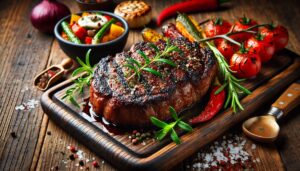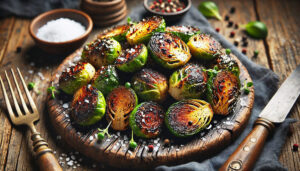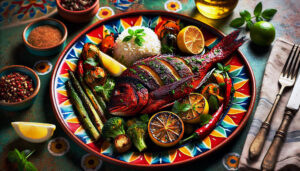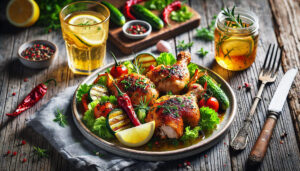Maillard has arrived in the Hudson Valley, and many of us are happy about that. Not long ago, it was much harder to find food with that delicious seared, charred, or blackened flavor that people love in dishes like seared steaks, fried dumplings, seared fish, grilled vegetables, and those great smash burgers.
The secret behind these mouthwatering flavors is the science of cooking known as the Maillard Reaction. Named after the French chemist Louis Camille Maillard, who first described this process in 1912, it plays a key role in the culinary world. Often called the browning reaction, non-enzymatic browning, or melanoidin formation, it creates the complex flavors and rich colors we associate with well-cooked food.
Ad
At its core, the Maillard reaction occurs when amino acids and reducing sugars react under heat, introducing a variety of flavor compounds and creating that coveted golden-brown color. This transformation enhances the taste and appearance of food, significantly affecting its aroma and giving cooked dishes a tantalizing scent that makes our mouths water.
The Maillard reaction is particularly crucial in food processing and storage, as it contributes to flavor complexity and color, while also enhancing the functional properties of proteins and their antioxidant activity. These changes often lead to a more enjoyable dining experience, elevating simple ingredients into something extraordinary. Typically, this reaction occurs optimally at temperatures between 140°C and 165°C (280°F and 330°F), making it essential for various cooking techniques. Caramelization and pyrolysis become more dominant as temperatures rise beyond these ranges, enhancing the range of flavors available.
Ad
Although this process isn’t new or groundbreaking, it’s increasingly valued by diners eager to discover deeper flavors in their food. As diners become more familiar with the science behind cooking, they are more likely to seek out dishes that showcase the Maillard reaction. This trend isn’t just about food; it’s about a shared love for the art of cooking and the joy it adds to our meals.
Therefore, the Hudson Valley is experiencing a culinary revival, where understanding cooking techniques turns dining into a more meaningful experience. People aren’t just eating; they’re appreciating the complex flavors that have been carefully developed through centuries of culinary tradition, now enhanced by modern methods and a growing interest in food science. As chefs continue to explore the magic of the Maillard reaction, we can expect to see an even wider variety of flavorful, beautifully crafted dishes in the future.
The Sojourner
Share this!
122224




